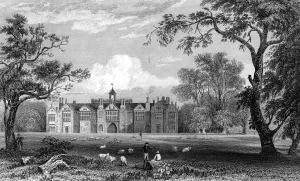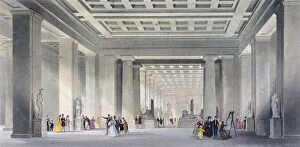Robert Sands Collection
Robert Sands was a talented artist and engraver who left his mark on various iconic landmarks and scenes from around the world
All Professionally Made to Order for Quick Shipping
Robert Sands was a talented artist and engraver who left his mark on various iconic landmarks and scenes from around the world. In 1832, he immortalized Gosfield Hall in Essex through an exquisite engraving that captured its grandeur and beauty. His artistic prowess extended beyond England's borders, as evidenced by his work in Rome during the 1820s, where he skillfully depicted the city's enchanting allure. London also served as a canvas for Robert Sands' artistry. In 1812, he masterfully portrayed Drapers Hall on Throgmorton Street, showcasing both his attention to detail and architectural finesse. The British Museum became another subject of his creative endeavors in 1836 when he painted The Grand Central and Egyptian Saloons with remarkable precision. Sands' talent wasn't limited to urban landscapes; he also had a knack for capturing natural beauty. A prime example is his depiction of Dunold Mill-Hole near Lancaster in 1845, which showcased the serene charm of this picturesque location. He ventured even further afield to Damascus, Syria in 1841, where he skillfully rendered the Barrada River (also known as Pharpar) against the backdrop of this ancient city's rich history. Egypt held a particular fascination for Sands, evident through multiple works such as The Great Temple at Baalbec (Heliopolis), created in 1841. This piece exemplified not only his technical proficiency but also his ability to convey the grandiosity of monumental structures like no other. Sands' travels weren't solely focused on Europe and Egypt; Paris beckoned him too. In 1822, he expertly illustrated Notre Dame's west front—a testament to both its Gothic splendor and Sands' artistic dexterity. Closer to home once again, Sands turned his attention towards Green Park in Westminster during 1814 when he depicted the Temple of Concord with great finesse.











